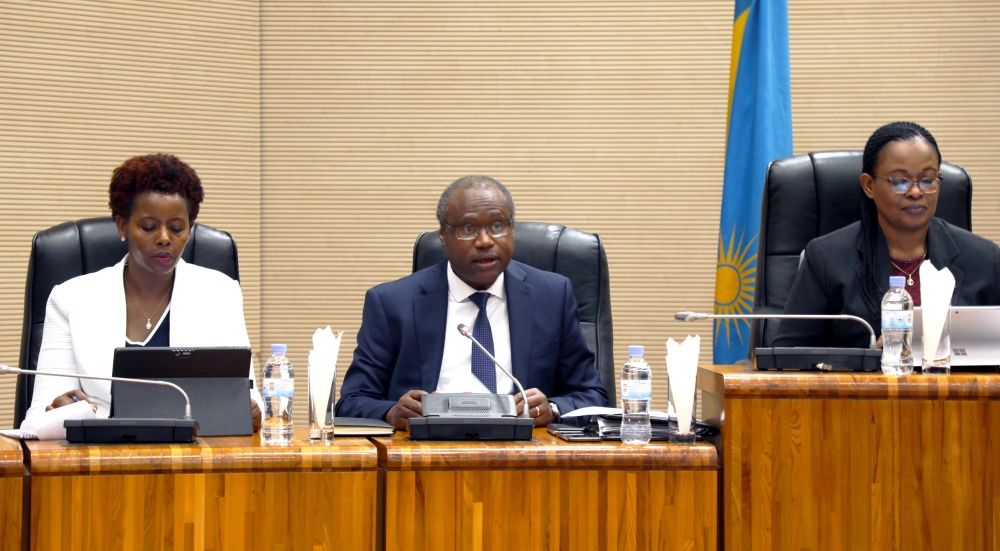

The mandate of the deposit guarantee fund could be extended to include offering financial assistance to deposit-taking institutions in case they are unable to meet financial obligations such as paying their creditors, once a new bill is voted into law.
On July 31, the Lower House’s Plenary sitting approved the relevance of the draft law establishing the deposit guarantee fund. Speaker Donatille Mukabalisa said it will be carefully scrutinized by a parliamentary committee before lawmakers pass it.
ALSO READ: Deposit insurance fund in the offing
A deposit guarantee fund is a mechanism established to protect depositors against the loss of their insured deposits – or indemnify (compensate) them – in the event of failure or liquidation of a bank or a deposit-taking microfinance institution.
The organization and functioning of deposit guarantee funds for banks and microfinance institutions are determined by a 2015 law. The fund is managed by the Central Bank.
Rationale for new bill
The draft law aims to address gaps noted during the implementation of the 2015 law and to comply with international standards that govern the management of the Deposit Guarantee Fund.
MP Veneranda Nyirahirwa sought clarity on the gaps identified during the implementation of the law, the inconveniences they caused to depositors, and reassurance that the new law will not have similar loopholes.
The Minister of Finance and Economic Planning, Uzziel Ndagijimana, said that the National Bank of Rwanda became a member of the International Association of Deposit Insurers (IADI) in 2018, and it was realised that the responsibilities of such a fund include backing a financial institution to save it from imminent insolvency and liquidation.
The main reasons for the initiation of the bill include harmonising the current legislation with the International Association of Deposit Insurers (IADI) core principles – to ensure that the fund operates in line with international standards.
This, he said, is aimed to highlight that the Deposit Guarantee Fund is moving from pay box – only in charge of reimbursing depositors in case the bank of deposit-taking financial institution is declared bankrupt – to pay box plus mandate. The new mandate is to assist banks or deposit-taking microfinance institutions in financial distress.
"The fund can support financial institutions that have not yet reached the liquidation level. Consideration should be made to establish what is less costly than the other – either to liquidate the bank or microfinance institution in question so that people who saved money in it get compensated or if assistance can be provided to financially recover those institutions for them to carry on their operations,” he said.
So far, he said, only one payout was made, in September 2019, to members of Caisse des Affaires Financières Isonga (CAF-Isonga Ltd) – a micro-finance institution whose head office was in Muhanga District – when it went into liquidation.
Liquidation is the process of selling off all the assets of a registered entity, settling its debts, distributing any remaining funds to shareholders, and closing it down as a legal entity.
The bill provides that the assets of the Fund are invested in government securities or in any other safe investments determined by the National Bank of Rwanda. The latter determines, by regulations, the maximum insured amount of a depositor in a contributing bank or contributing deposit-taking microfinance institution.
However, the Fund does not cover the deposits of banks and microfinance institutions; the deposits of insurance companies, pension funds, and collective investment schemes; or the deposits of Government or public agencies.
Ndagijimana said the fund has 15 contributing banks and 457 contributing microfinance institutions, 416 Umurenge Savings and Credit Cooperatives (USACCOs) included.
As of now, it has accumulated funds amounting to more than Rwf16 billion, he indicated.
Ndagijimana said that it started its operations in 2016 with three main functions including collection of premiums from contributing members; investment of premiums collected and other incomes so as to generate more revenues; and payout of insured deposits in case of failure of a bank of a microfinance institution.
The first premiums were collected in March 2017 and the first investment was made in June 2017.


